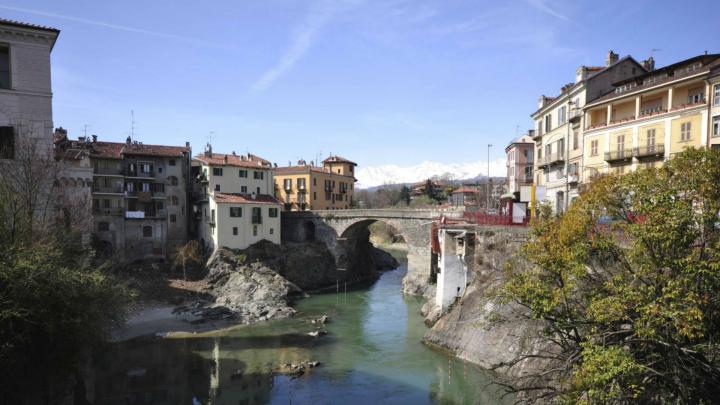The town of Ivrea, famous for the industrial plants of Olivetti and for its Historical Carnival, is considered, for historical reasons, "the capital of the Canavese region". The particular configuration of the hills, including the so-called Serra Morenica, considered to be the largest formation of its kind in Europe, tends to form a genuine geological amphitheatre, with Ivrea set right in the middle.
In the past, the town, the origins of which date back to the period of Roman colonisation, giving it the name "Eporedia", held a strategic position as the last outpost at the foot of the Alps. Even today, it is part of the Via Francigena and has witnessed the arrival of pilgrims from all over Europe over the centuries. The Francigena was not only a devotional route but also the route followed by merchants, armies, politicians and cultural figures who created a channel of exchange and communication that led to the substantial unification of European culture between the 10th and 13th centuries.
Thanks to its historical importance and particular environmental characteristics, the town of Ivrea and the surrounding area offer a considerable number of opportunities for culture and tourism.
Walking through the streets of Ivrea "la bella", as Carducci called it in his poem Piemonte, you can admire the "red towers" of the imposing castle built by Amedeo VI of Savoy, known as the Conte Verde or Green Count. Also in the upper part of the city, we find the Bishop's Palace and Cathedral of Romanesque origin; another historical attraction is Piazza Nazionale, formerly known as Piazza Palazzo di Città, located in the old village.
In Piazza Gioberti you will find the terracotta statue depicting the orange thrower, symbol of Ivrea's most famous event, the Historical Carnival, unique throughout the world. The event celebrates an episode of liberation from tyranny dating back to the Middle Ages and culminates in the famous and spectacular Battle of the Oranges, a moment of intense engagement and excitement.
At the end of the street dedicated to the first king of Italy, Arduino, we come to the "Ponte Vecchio", a Roman bridge built in around the third century, which crosses the Dora Baltea and leads to the so-called Borghetto, a fortification of ancient houses and craft shops. The river is flanked by the Federal Centre and the Canoe Stadium, an internationally renowned sports facility located along the inner-city stretch of the river.
In addition to a historical, Romanesque, medieval and naturalistic route, with its five lakes, Ivrea offers an itinerary linked to Olivetti's building and urban heritage. Architecture born from the social, as well as industrial, vision of Adriano Olivetti, entrepreneur, politician, publisher and humanist, who worked tirelessly not only for his own company but, above all, to completely renew the methods and the sense of work. Factories and buildings constitute an authentic virtual open-air museum, which the town has preserved and relaunched, founding the MAAM (Museum of Modern Architecture of Ivrea) and then applying to become a UNESCO World Heritage Site.
And what could be better than to end the itinerary in "sweetness", in the historic Balla cake shop. We suggest that those with a sweet tooth stop to taste the famous "Torta '900" cake, so called because it was created at the end of the 19th century by Ivrea's famous pastry chef Ottavio Bertinotti, founder of the shop that still jealously guards the recipe today. In addition to the secret ingredient that no one knows, the cake consists of a soft, light base, two chocolate discs, filled with a delicate cream made of chocolate, butter and patisserie cream. And to finish off... a dusting of icing sugar!

